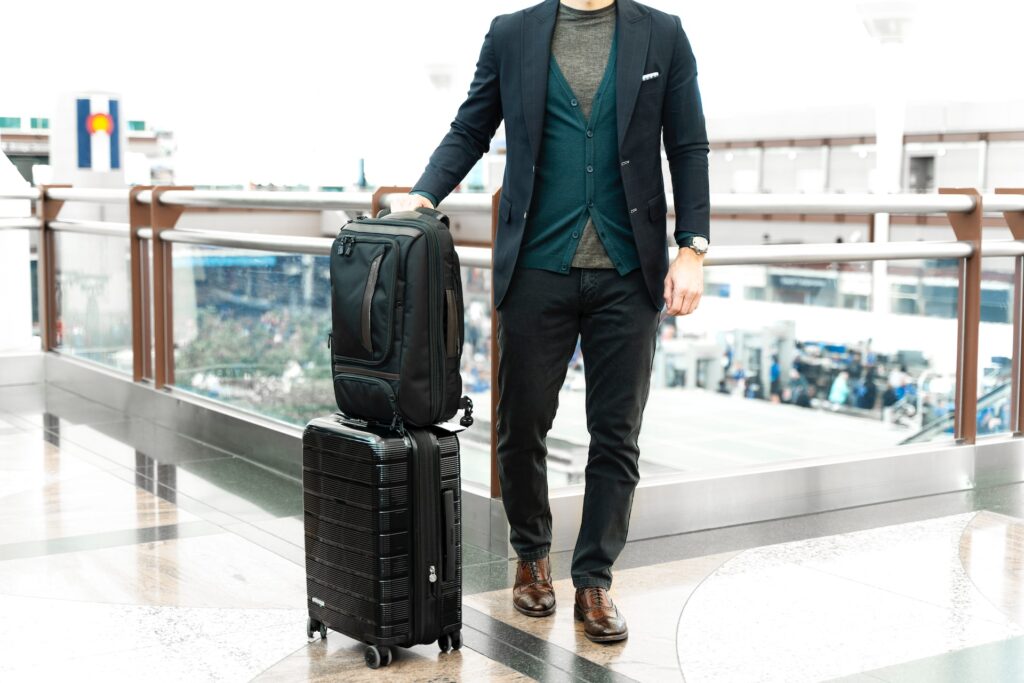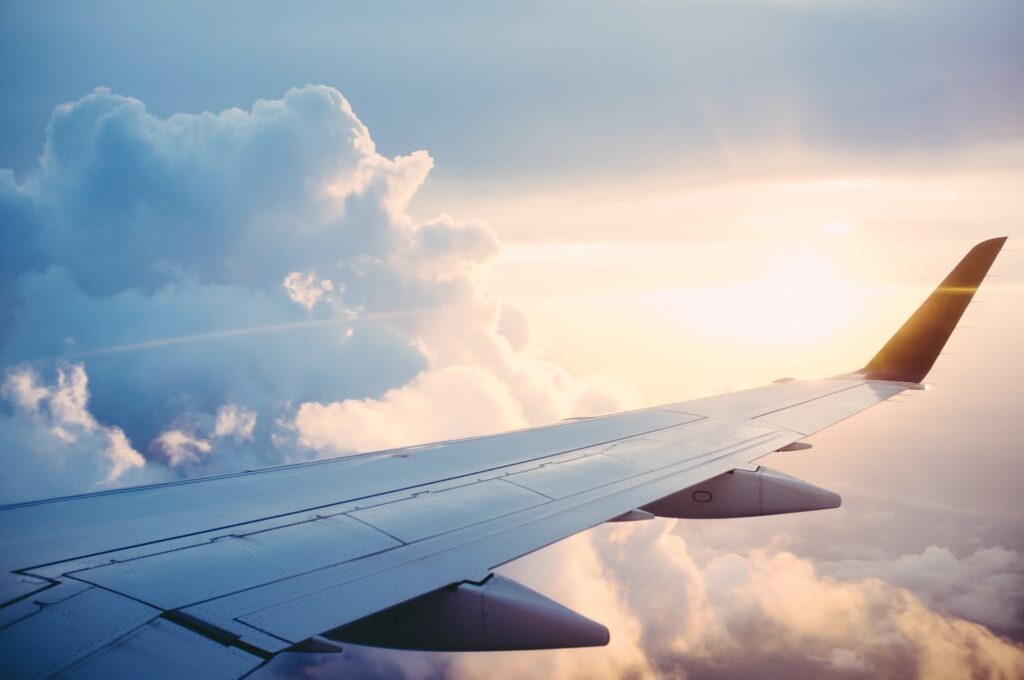Most people are afraid of new activities. And here we are talking not about unusual things, like parachuting or online betting on sports, but also about some routine events, including airplane flights. Never been on a plane before? Then these tips will help.
Buying a Ticket for a Flight

The starting point of your first flight on the plane is buying a ticket. And now the ticket has arrived at your email. There’s no turning back! All you have to do is wait for the cherished date, plan your itinerary and anticipate an unforgettable vacation.
Time on the ticket is always given as local. Both in departure and destination points.
Do you have to print a ticket? As a rule, airlines don’t require passengers to produce any papers. For your own peace of mind you can save your ticket on your phone.
Take a photo of your passport with your phone and send it to your email. In another country, the photo may come in handy to show to the police or to access certain attractions.
Buy a travel insurance policy. It’s inexpensive, and prices for medical services in another country are often cosmic. Insurance covers many travel risks. It’s better to print out the policy and take it with you.
Registration for the first flight on the plane is easiest to make online. It saves a lot of time and nerves! Usually, electronic check-in opens 24 hours before departure. Simply go to the airline’s website or mobile app and look for the “Check-in” tab – and follow the instructions:
- Enter your last name and reservation code.
- Tick the passengers you want to check in.
- Choose a seat in the cabin (be careful: you usually have to pay for this service).
- Which seat? Near the porthole you can admire the views of the sky and the earth from above, but you have to pull the neighbors when you go to the bathroom. By the aisle – easy to get out, but you have to let the suffering people out. In the middle – not comfortable, especially with a long flight. But if you want to socialize with fellow passengers, why not!
- If you’re undecided, the system will choose a seat automatically.
- Enter your loyalty program number – if you have one – and you’ll earn bonus miles for your flight.
The result of online registration should be a boarding pass to your personal account or email. Save this document in your smartphone and print it out for convenience: it will come in handy at the airport.
If online check-in isn’t available, that’s okay. You can also get your boarding pass at the airport, more on that later.
Preparing Your Baggage and Carry-on Baggage

Your ticket has information on luggage options, so check them before you fly. All items you take with you fall into two categories:
- Hand luggage. A backpack, bag, or small suitcase that you carry into the cabin. To avoid unpleasant surprises, find out in advance about airline requirements for size and weight of hand luggage. You may also take with you your laptop computer, a book, a jar of liquid or cream not exceeding 100 ml each (but not exceeding one liter per person), snacks, and fruit.
- Luggage. A large suitcase or bag that will fly in the luggage compartment. Here we put clothes, cosmetics, things you will need only after checking into the hotel.
- If you fly light with one carry-on baggage, the ticket will be cheaper, and at the airport there are less formalities. The first flight will be easier and more pleasant.
If the luggage or hand luggage doesn’t meet the requirements of the airline, you will have to pay a fine or urgently move things from bag to bag right at the counter. To avoid embarrassment and scandals, just don’t break the rules. The employees behind the counter are relentless and have clear instructions.
A plane isn’t the most comfortable place to sit for a long time. So dress as comfortably and loosely as possible. Sometimes it can be chilly at altitude, in addition, there may be a puff of air conditioning blowing around. A cozy sweatshirt in hand luggage is not superfluous.
You shouldn’t wrap your suitcases at home. There are times when luggage is asked to be opened when you enter the airport. If you want to save money, just bring food wrap and duct tape to wrap your precious possessions after passing through security.
Instructions for Passengers at the Airport
Arriving at the Airport

Check-in usually ends 40 minutes before departure. Boarding is 15-25 minutes before departure. To get everything done in time and not run around in a panic, arrive at the airport two hours before your domestic flight and three hours before your international flight. It is best to calculate in advance the time that it will take to get there, and put it to spare. Subway, train or Aeroexpress exactly in time. Cabs, cars, buses and minibuses are unpredictable: traffic jams and other force majeure are possible.
Getting Into the Airport and Finding a Terminal
When you fly for the first time, there are a few scary crowds of people and the need to perform a lot of incomprehensible actions. Let’s go over it step by step.
It’s really simple: follow everyone, put your luggage and hand luggage on the security belt and go through the screening. To avoid holding up the line, take off your watch in advance and empty your pockets of coins and keys. If you have your phone or laptop computer, the clerk will ask you to turn them on.
Find out in advance from your ticket or boarding pass what terminal your flight will depart from. This will make it easier to get there on time. In large airports, terminals may be located far from each other, and it takes time to get from one terminal to the other.
Scoreboard and Check-in Area

We take our luggage and check our pockets to see if we have our phones, keys, and wallets. Next, we look for the biggest board. On it we look out the number of our flight – find out the departure time, coordinates of check-in and boarding. Then the scenario may vary.
The easiest way is to go to the check-in counter and show your passport. You will get a boarding pass and take your luggage, which will be on the same flight.
There are also self-check-in kiosks in the terminal. They look like ATM machines. To get a boarding pass, just enter the necessary data. The ticket will be printed automatically.
If you checked in online or at a kiosk, printed the boarding pass, and you only have hand luggage, you’re a free man – you can safely go in the direction of the gate.
If you have luggage, you must check it in at the counter of your flight. Your boarding pass has a tag that you must not lose. Use it to find and get your luggage when you arrive.
Personal Check
Your luggage is checked in, you have your boarding pass and your passport. The first obstacle is the personal security check. Usually it looks like a strip search with a luggage scanner and a metal detector frame/camera.
You take a plastic tray and put your outerwear, belt, and massive jewelry in it. In a separate tray, you put your phone and other equipment. Sometimes they ask you to take your shoes off as well. Look how other passengers do – and do the same.
While neatly stacked items are going on the belt and being examined by specialists, walk through the frame with your hands up. Strictly observe the line and take your time. If the frame beeps, a staff member will do an extra check. That’s okay – it’s standard procedure.
After successfully passing through the metal detector, step aside with the trays so as not to disturb anyone, and on a special bench gather your belongings. If there was anything prohibited among them, the staff would ruthlessly demand that you get rid of it.
Boarding the Plane

You’re in the departure area! The first thing to do is to look for the board and see if the departure time and gate number have been changed. If time permits, you can have a snack, do some shopping, stock up on drinks and food for the flight, read something, and go to the bathroom.
Boarding is announced on the loudspeaker. Information is duplicated on the general board and over the board in the gate. It’s time to fly! It is not necessary to get in line ahead of everyone else: you can wait until the boarding gate queue thins. We present your boarding pass and (upon request) your passport to the airline representative, take the ticket stub – and we go to the handsome airliner.
You can exhale, you did everything right! Just follow others either to the bus, which goes right up to the gangway, or to the long arm of the airplane leading into the cabin. The friendly flight attendant will tell you the easiest way to get to your seat.
How Flying on a Plane Works

Seats
To avoid confusion, first find your seat (numbers are above the rows), put your carry-on baggage on the shelf above the seats, and the small things you need during the flight (book, tablet, water, headphones) – in the pocket of the seat in front of you. You can make yourself comfortable without disturbing your neighbors, and look forward to a happy debut in the sky!
Food and Water
The choice of food depends on the airline. Sometimes lunch is included in the price, sometimes they charge for it. There may be more than one meal and a juice sandwich on the menu. Don’t hesitate to ask for more than one drink, courtesy will not be refused. At worst, they will offer you only water, but as much as you want.
Take-off and Landing
You can forget about gadgets during the flight. Set your phone to airplane mode or turn it off – and forget about social networking for a few hours! On takeoff you may feel some jolting, sometimes your ears hurt – it is normal. A few bumps of the landing gear on the ground are normal. Don’t worry, the crew is well trained and knows what they are doing.
Belts and Signals
When taking off and landing, crew members will ask you to fasten your seat belts. You should do the same when the appropriate sign above your head lights up. Strictly follow the instructions. You may go to the toilet when the “Fasten Your Seatbelts” panel goes out.
Turbulence Zone
“Dear passengers, the plane is entering a turbulence zone…” Who hasn’t had a heartbeat at those words from the captain? Turbulence is a phenomenon in which an aircraft overcomes swirling wind currents. Yes, it makes you shake. No, it isn’t dangerous. There is no need to panic when passing through the turbulence zone. Sit in your seat, buckle up (so you don’t hit yourself in the jolt) and wait until the “turbulence” is over.







